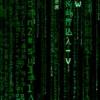Let's try this please.
Step#1 - Mount/Fix Registry
1. At the command-prompt please type regedit and hit enter on the keyboard.
2. The Registry Editor will open. Please click the mouse on HKEY_LOCAL_MACHINE as shown below.
3. Click the File menu and select Load Hive.
4. Click on the Computer icon and identify the drive letter for your Main hard drive. The size of the hard drive will be a good indicator. Most times it is C: however.
5. Assuming your main hard drive has a drive letter of C:\, double-click this.
6. Then double-click on the Windows folder.
7. Then double-click on the System32 folder. You may have to click on the vertical scroll bar to move down and see all the folders.
8. Then double click on the config folder and you should see something like the following. Click on the file named system and click Open.
9. You will be prompted for a Key Name. You can type anything in here but I recommend something like SickMachine as shown below. Click OK.
10. If we are lucky you will get something like "One or more files containing the registry were corrupt and had to be recovered by use of log files. The recovery was successful."
If not, let me know what happens at this point.
11. Next click on the plus sign next to HKEY_LOCAL_MACHINE and you will see a new key named SickMachine as shown below. Please click on this key.
12. Click on the File menu and select Unload Hive. Answer Yes to the message asking if you are sure.
13. You can close the Registry Editor now.
I'd like to know how these steps go before we try and reboot your machine again. Thank you.

 This topic is locked
This topic is locked













 Sign In
Sign In Create Account
Create Account

